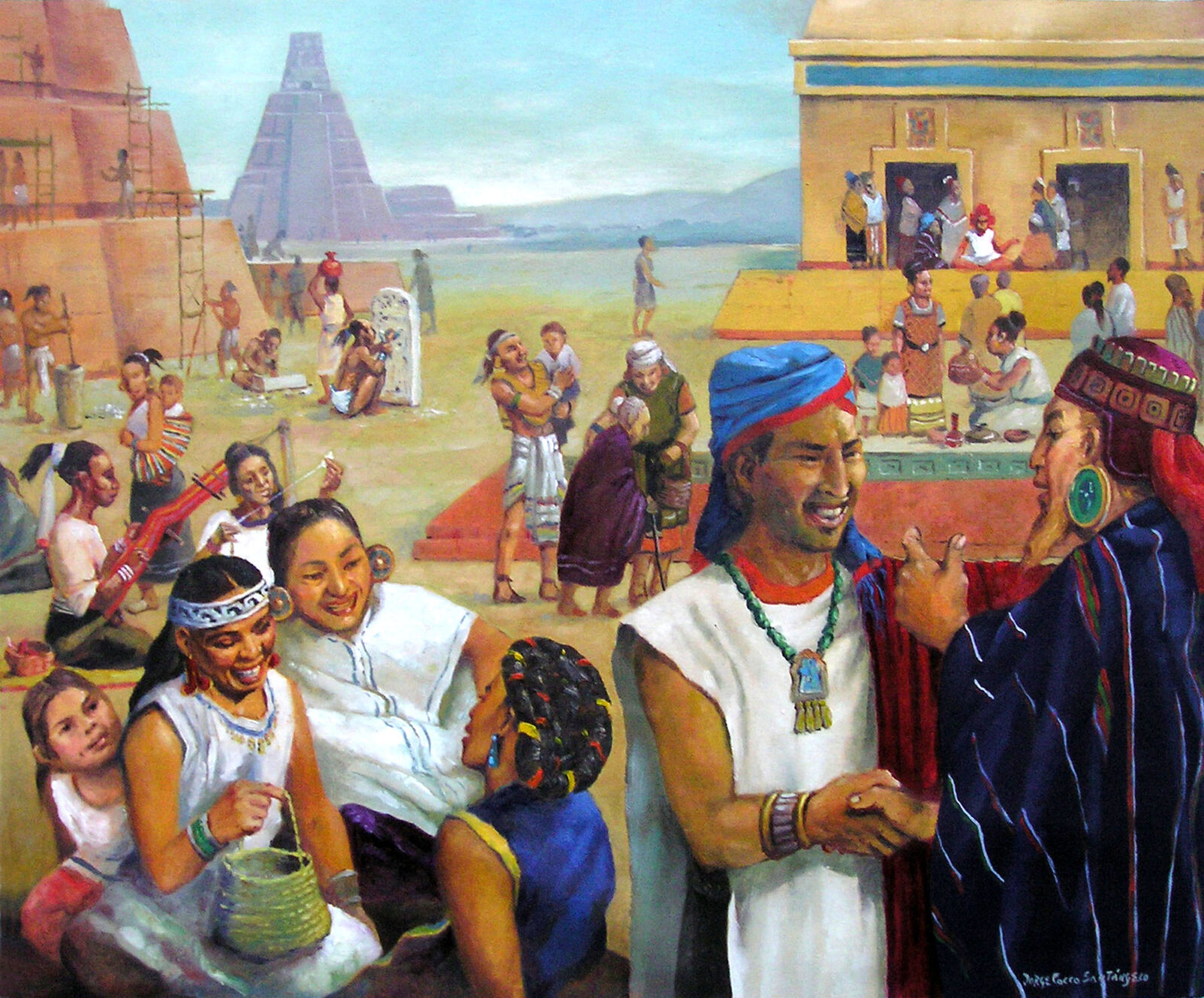To accompany your Come Follow Me study for October 21-27
You will enjoy the following related videos this week:
And there is some excellent commentary in the Book of Mormon Institute Student Manual at:
If you would like a Kahoot game related to this material which you could use for personal study or use with your family or your class, click here: https://create.kahoot.it/share/3-nephi-27-4-nephi/7a33225a-3231-4094-bf4d-49a9ebcd6d9a. To use it with a group, after clicking on this link, you will need to log into Kahoot, creating a free account if you have not done so previously, then click on the blue “Host Live” button or the gray “Assign” button, depending on how you wish to use the Kahoot. Some of the Kahoot questions may presuppose that the player has read through the suggested answers to the following Points to Ponder and at least has browsed the Institute student manual as well.
Points to Ponder in 3 Nephi 27-30 and 4 Nephi
1. What were the two requirements Jesus said a church had to have to be considered His? When did our Church get its current name? What was it called prior to that? How could it have been the true church if it didn’t have the right name?
2. Why are we counseled to use the full name of the Church? How should we respond if someone asks us if we are “Mormons”?

3. The Lord has said, “The Book of Mormon… contains … the fulness of the gospel of Jesus Christ….” (D&C 20:8-9) How can that be, when the book says virtually nothing about such vital topics as celestial marriage, the three degrees of glory, temple work for the living and the dead, God’s having a body of flesh and bones, the Word of Wisdom, priesthood quorums, and the Relief Society? What are the essential elements of the “gospel” as Jesus defines them in 3 Nephi 27:13-21?
4. What passage in this week’s reading would you suppose used be one of the 25 seminary scripture mastery passages that students were encouraged to memorize? Why do you suppose it was selected?
5. On the average, a ward priesthood or auxiliary officer serves for about how long in today’s Church? How long does a bishop typically serve? A stake president? What is the longest time anyone you personally know has served in the same calling? After how many years is it okay to ask for a release? What does any of this have to do with 3 Nephi 27-30?
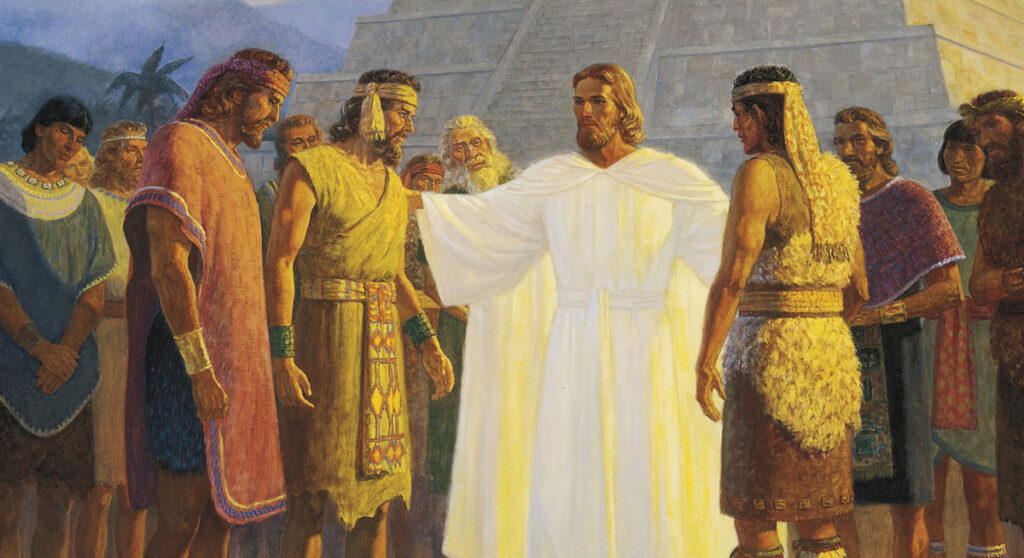
6. What do we know about the activities of the three Nephite disciples over the last 2000 years?
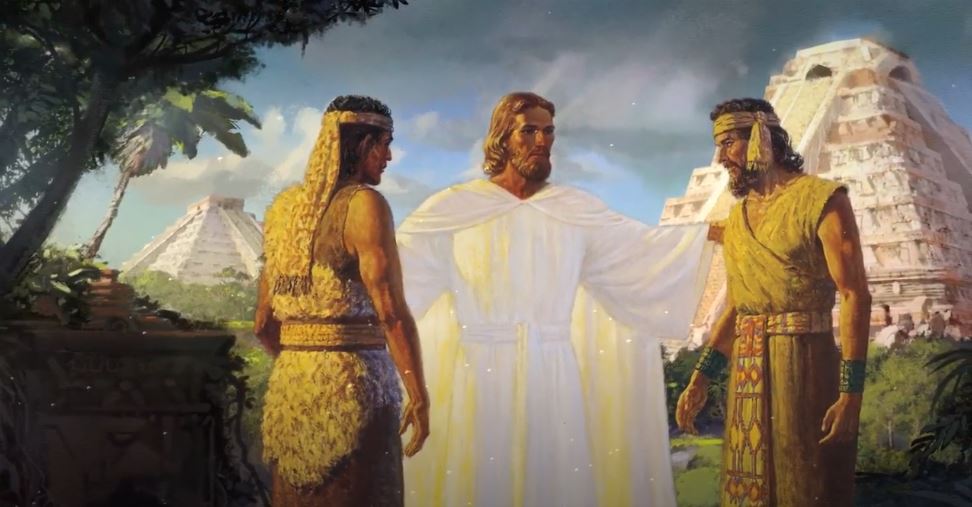
7. What other points from 3 Nephi 27-30 deserve some attention?
8. Can you find at least four physical blessings the Nephites enjoyed during their 160 year mini-Zion? (You may have to read between the lines a little.)

9. What are the social and economic blessings the Nephites enjoyed during this time?

10. What are the spiritual blessings they enjoyed at this time?

11. How and why did this golden age come to an end? How many separate steps can you identify in their downward spiral?
12. How would you summarize the lessons you think Mormon hoped we would learn from this chapter in Nephite history?
13. How would you feel if you stood in line for 8 hours to get into an Olympic event and then got to see only five seconds of it? Why does the Book of Mormon prophesy the coming of Christ for 600 years, then devote only two pages to describing the wonderful era of peace and prosperity which followed His coming?
Possible Answers to Points to Ponder in 3 Nephi 27-30 and 4 Nephi
1. What were the two requirements Jesus said a church had to have to be considered His? When did our Church get its current name? What was it called prior to that? How could it have been the true church if it didn’t have the right name?
a. The Savior said it needed to bear His name AND be built upon His gospel. (3 Ne 27:8.)
b. Our Church’s current name was revealed on April 26, 1838, in D&C 115:4. Prior to that it was known at times as “The Church of Christ” (See the title page of the 1833 Book of Commandments), “The Church of Jesus Christ,” or “The Church of the Latter-day Saints” (See the title page of the 1835 Doctrine and Covenants).
c. The Church, of course, was always true, even if sometimes its name was abbreviated. It was always understood to be Christ’s Church (See D&C 20:1), and it was always founded upon His gospel. Evidently it was important but not terribly urgent to standardize the name until the Lord revealed His will on the subject in 1838.
2. Why are we counseled to use the full name of the Church? How should we respond if someone asks us if we are “Mormons”?
See President Russell M. Nelson’s October 2018 general conference talk on “The Correct Name of the Church” at https://www.churchofjesuschrist.org/study/general-conference/2018/10/the-correct-name-of-the-church?lang=eng. This is the Savior’s Church, and we honor Him by using the name He has prescribed.
But there is no need to be offended if others refer to us as “Mormons.” President Gordon B. Hinckley said: “I suppose that regardless of our efforts, we may never convert the world to general use of the full and correct name of the Church. Because of the shortness of the word Mormon and the ease with which it is spoken and written, they will continue to call us the Mormons, the Mormon church, and so forth. They could do worse. More than fifty years ago, when I was a missionary in England, I said to one of my associates, “How can we get people, including our own members, to speak of the Church by its proper name?” He replied, “You can’t. The word Mormon is too deeply ingrained and too easy to say.” He went on, “I’ve quit trying. While I’m thankful for the privilege of being a follower of Jesus Christ and a member of the Church which bears His name, I am not ashamed of the nickname Mormon. “Look,” he went on to say, “if there is any name that is totally honorable in its derivation, it is the name Mormon. And so, when someone asks me about it and what it means, I quietly say—’Mormon means more good.'” (The Prophet Joseph Smith first said this in 1843; see Times and Seasons, 4:194.)
His statement intrigued me—Mormon means “more good.” I knew, of course, that “more good” was not a derivative of the word Mormon. I had studied both Latin and Greek, and I knew that English is derived in some measure from those two languages and that the words more good are not a cognate of the word Mormon. But his was a positive attitude based on an interesting perception. And, as we all know, our lives are guided in large measure by our perceptions. Ever since, when I have seen the word Mormon used in the media to describe us—in a newspaper or a magazine or book or whatever—there flashes into my mind his statement, which has become my motto: Mormon means “more good.” We may not be able to change the nickname, but we can make it shine with added luster.
3. The Lord has said, “The Book of Mormon… contains … the fulness of the gospel of Jesus Christ….” (D&C 20:8-9) How can that be, when the book says virtually nothing about such vital topics as celestial marriage, the three degrees of glory, temple work for the living and the dead, God’s having a body of flesh and bones, the Word of Wisdom, priesthood quorums, and the Relief Society? What are the essential elements of the “gospel” as Jesus defines them in 3 Nephi 27:13-21?
The Lord in 3 Ne. 27:21 clearly differentiates between His “gospel” and the details of “the things that ye must do in my church.” In his definition of gospel, He highlights seven points:
- The atonement (27:13-15)
- Faith (27:19)
- Repentance (27:16, 19, 20)
- Baptism (27:16, 20)
- Gift of the Holy Ghost (27:20)
- Enduring to the end (27:16, 19)
- Judgment according to our works (27:14-15, 20).
The Book of Mormon contains a fullness of what we need to know about those basic principles and is by far our best scriptural source on all of them. The other details of Church organization and practices and even doctrine, while important, are related to the gospel but are not the gospel per se. Organization and policies change according to the needs of the times. The basic doctrines of the gospel itself will never change and have been the same from the days of Adam until now.
For a further discussion of how the Book of Mormon better teaches the fundamental principles of the gospel than any of our other standard works, see my article at: https://latterdaysaintandhappy.com/unique-contributions-book-of-mormon/.
4. What passage in this week’s reading would you suppose used be one of the 25 seminary scripture mastery passages that students were encouraged to memorize? Why do you suppose it was selected?
3 Nephi 27:27. Nothing can be more important than holding up Jesus Christ as a model for our behavior.
5. On the average, a ward priesthood or auxiliary officer serves for about how long in today’s Church? How long does a bishop typically serve? A stake president? What is the longest time anyone you personally know has served in the same calling? After how many years is it okay to ask for a release? What does any of this have to do with 3 Nephi 27-30?
It would seem that the average term of service is about 1-2 years for most positions—probably far too short for maximum effectiveness. Bishops typically serve for about five years and stake presidents for 9-10 unless there is a compelling reason to release them sooner. But Sarah Melissa Granger Kimball served 41 years as ward Relief Society president in the Salt Lake City 15th Ward. Elijah F. Sheets served as bishop of the Salt Lake City 8th Ward for 49 years. Russell M. Nelson was ordained an apostle 39 years ago! David O. McKay holds the modern record, having served as an apostle for nearly 64 years, including time in the First Presidency. But the all-time record is held by the apostle John and the 3 Nephite disciples, who have been serving in their current capacity for nearly 2000 years. We may want to think of them before telling the bishop we’ve been serving where we are for too long. In fact, it would seldom, if ever, be appropriate to “ask for a release,” though it is always appropriate to let the presiding authorities know of changes in circumstances in our lives which they might want to be aware of as they consider whether or not to extend a release to us.
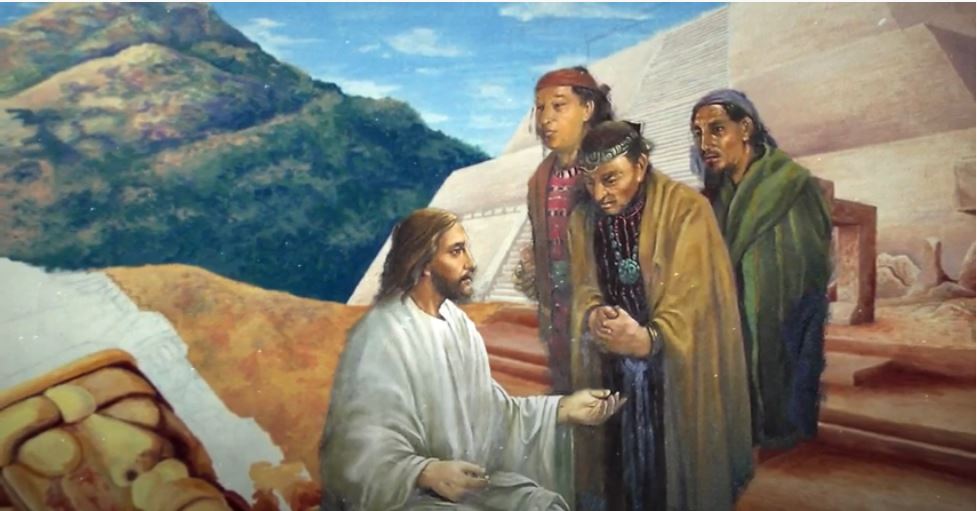
6. What do we know about the activities of the three Nephite disciples over the last 2000 years?
They were changed or “translated” so as not to die or suffer physically while they continued their mortal mission. After the Nephites generally apostatized, they subjected these disciples to such indignities as prison, dens of wild beasts, and fiery furnaces, which did them no harm. They appeared and ministered to Mormon and Moroni. It was said that they would be among both the Jews and the Gentiles without being known, so we have few details of their specific activities, though the following accounts may be of interest:
a. During the 1948 Israeli war for independence: “At this critical moment, God showed them that he was on their side, for he performed one of the greatest miracles that ever happened. The Arabs suddenly threw down their arms and surrendered. When their delegation appeared with the white flag, they asked, “Where are the three men that [stood before us] and where are all the troops we saw?” “The Jews told them that they did not know anything of the three men, for this group was their entire force. The Arabs said that they saw three persons, with long beards and flowing white robes who warned them not to fight any longer, otherwise they would all be killed. They became so frightened that they decided to give up. What an encouragement this was for the Jews to realize that God was fighting for them.” Legrand Richards, Conference Report, April 1954, 55 – 56.)
b. Indian Traditions, by Golden R. Buchanan: “Some months ago I spent a few days in the hinterlands of the reservation. Among others that I visited was an old medicine man. His home was so remote that up to this time he had never heard the gospel. As we sat in his home, I began the story of the gospel, using his lovely daughter as an interpreter. As the story progressed, I could see his interest rising, and by the time our story reached the part of the visit of the Savior to this continent and his choosing of the Twelve, he could contain his eagerness no longer. In his native tongue, for he could speak no English, he said, “I know of that,” and putting up his hands he named the Twelve disciples chosen by the Savior. He gave them all names and in order. As the story continued, more and more he entered into the discussion, supplying parts of it. He was so completely enthralled that he seemed not to notice that we were white people. He fitted in the stories of the people with the message of the restoration. Later on in the day, as we sat in the shade visiting, I asked him if he would let me have and write the names of the Twelve as he had given them. He thought a while and then cautioned that should I write, I must never give them to the world. They were sacred, and not to be used lightly. But, since I was his friend and knew the story anyway, he would give them to me and I might write them if I would keep them to myself. He then named them one by one, each in its place; there could be no variation. As we sat there visiting, I thought to try him on another point. “Which of these Twelve are the three that did not die?” I asked. His eyes flashed, he looked at me searchingly. I seemed to read the thoughts in his mind, which were something like this. “How could you white men know about such things?” I said further to him, “Yes, I know about it. It is here in your book, the Book of Mormon. It is no secret. Your forefathers wrote it, and we have it here. I just wanted to see if you could give me the names of the three.” He sat for some time with his head bowed, and then finally looked up and said, “The names of the Twelve I have just given you, are not the Twelve that he chose on this continent, they are the Twelve that were with him across the waters before he came here. Their names are sacred and must not be used lightly.” After some little time I asked him if he would give me the names of the Twelve chosen here. He looked up at me with a twinkle in his eye and said, “My friend, you have had enough for one time. Come again some other time.” He got up from the log and hurried away and busied himself with some sheep that were in the pen. As I sat there pondering, his wife came over and warned me again of the sacredness of what I had learned and suggested that they should only be used on rare occasions. On other occasions I have been told the story of the three who never died. Some of the old patriarchs claim that they have seen the three, that they have sat with them in conference and have discussed the program of the Navajo people. But, said one, “They are not just like us although they look like it. They are not dead, but something has happened to their bodies because they can sit with us in council and then, quick as a flash, they are clear across the reservation with another group of Navajos. I do not know how they do it, but I know them and have talked with them many times.”
c. Now while we was living in Illinois the Mormon elders came along and wanted to preach in my father’s house, so he let them but the neighbors advised him not to do so…. At that time my father was sick in bed and there was some holy persons, three of them, and he said they stood at the foot of his bed and told him that the Mormon Church was the only true church on earth, so in a day or so he and my mother was baptized. (David Cazier, Autobiography, BYU Special Collections, Writings of Early Latter-day Saints 1. The man who saw the three visitors was my great-great grandfather, William Cazier.)
d. As the newly founded Church grew in numbers, an ever-increasing body of stories began circulating among the people, telling of kindly old men, usually thought to be these ancient Nephite disciples, who had appeared to individuals in physical or spiritual distress, helped them solve their problems, and then suddenly disappeared. Because they span a century and a half of LDS history, these narratives mirror well the changing physical and social environments in which Latter-day Saints have met their tests of faith. For example, in pre-World War II agrarian society, the stories told of Nephites’ guiding pioneer trains to water holes, saving a rancher from a blizzard, providing herbal remedies for illnesses, plowing a farmer’s field so that he could attend to Church duties, or delivering food to starving missionaries. In the contemporary world, the stories tell of Nephites’ leading LDS genealogists to difficult library resources, pulling a young man from a lake after a canoeing accident and administering artificial respiration, stopping to fix a widow’s furnace, guiding motorists lost in blizzards, comforting a woman who has lost her husband and daughter in an airplane crash, and pulling missionaries from a flaming freeway crash. Even though the settings of the newer stories have moved from pioneer villages with a country road winding past to urban settings with freeways sounding noisily in the background, some circumstances have remained constant. In the stories, the Three Nephites continue to bless people and, in telling these stories, Latter-day Saints continue to testify to the validity of Church teachings and to encourage obedience to them. The stories continue to provide the faithful with a sense of security in an unsure world, persuading them that just as God helped righteous pioneers overcome a hostile physical world, so will he help the faithful endure the evils of urban society. Taken as a whole, then, the stories continue to provide understanding of the hearts and minds of Latter-day Saints and of the beliefs that move them to action. (Daniel H. Ludlow, “Three Nephites,” Encyclopedia of Mormonism.)
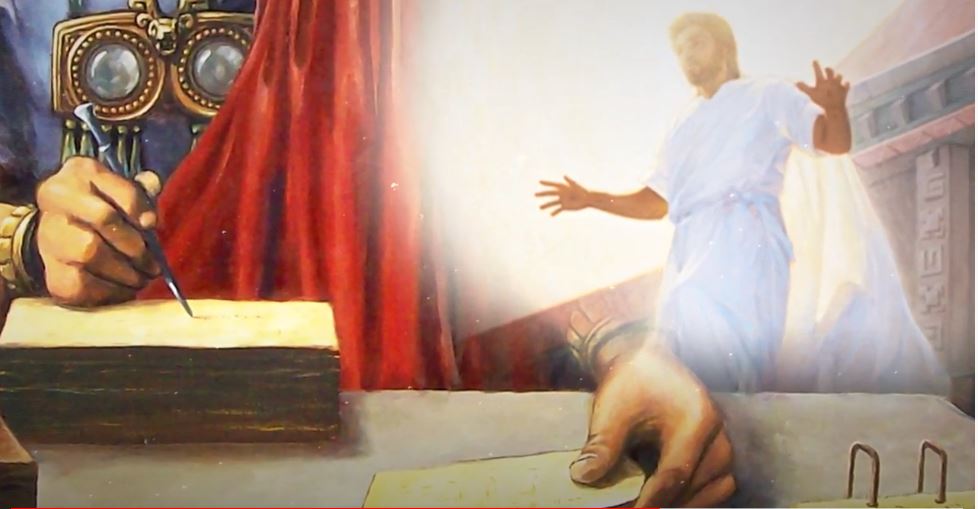
7. What other points from 3 Nephi 27-30 deserve some attention?
Perhaps some of the following are worth noticing:
- 27:1: The disciples were “united in mighty prayer and fasting.” Casual prayer alone may not have been sufficient to bring the blessing of another visit from the Savior which they were seeking.
- 27:3: How easily we start arguing with each other!
- 27:23: The importance of writing down spiritual experiences.
- 27:28-29: A marvelous promise to the disciples that whatever they asked for would be given. We can aspire to get to the same point that the Lord can grant us whatever we ask for, as we get to the point of seeking only that which is right.
- 27:32: Interesting reference to Judas as “the son of perdition.”
- 27:33: Another reminder that the gate is “strait” or narrow.
- 27:30-31: When we live like Jesus, we can be supremely happy.
- 28:9-10: Doing missionary work brings great joy.
8. Can you find at least four physical blessings the Nephites enjoyed during their 160 year mini-Zion? (You may have to read between the lines a little.)
- Sicknesses are healed. (4 Ne 1:5)
- Nephites multiply rapidly (4 Ne 1:10)
- They become an extremely good looking and delightsome people. (4 Ne 1:10)
- They begin to live longer. This is the least obvious one, but note the following:
- Nephi “died” in 110 a.d.,, having been head of the Church and historian since 1 a.d., or 109 years. He was probably at least 30 by then, so evidently lived at least 139 years. (Since those who were not going to be translated were to die at 72, Nephi was evidently one of the three!)
- Amos, who succeeded him, was probably Nephi’s oldest son and was probably born when Nephi was around 30, so could have been about 109 when he began to keep the records. He kept them 84 years, so could have died at about age 193!
- Amos 2 kept the record from 194 a.d. until 305 a.d., or 111 years. He was likely his father’s oldest son, and could therefore have been born when his father was about 30, so may have been 163 before he started, giving him a total life span of 274 years!
- Ammoron, Amos 2’s brother, kept the record an additional 15 years, so could have lived even longer! If he were born two years after Amos, he could have reached 287 years of age!
- The gospel tends to keep people young. On the occasion of Thomas B. Marsh’s return to the Church after his period of apostasy, Brigham Young said: “Brother Thomas considers himself very aged and infirm, and you can see that he is, brethren and sisters. What is the cause of it? He left the gospel of salvation. What do you think the difference is between his age and mine? One year and seven months to a day; and he is one year, seven months and fourteen days older than Brother Heber C. Kimball. [Young and Kimball evidently were the very picture of health and vigor at this time.] ‘Mormónism’ keeps men and women young and handsome; and when they are full of the Spirit of God, there are none of them but what will have a glow upon their countenances; and that is what makes you and me young; for the Spirit of God is with us and within us.”
9. What are the social and economic blessings the Nephites enjoyed during this time?
- No contention—only love and peace. (4 Ne 1:2, 4, 13, 15, 16, 17, 20) (Note how often is this repeated.)
- No crime (4 Ne 1:16)
- Matrimony emphasized (4 Ne 1:11)
- Great happiness (4 Ne 1:16)
- No classes or racial divisions (4 Ne 1:17)
- Great prosperity and equality—all things in common. (4 Ne 1:3, 7, 18
- New cities built (4 Ne 1:7-8)
10. What are the spiritual blessings they enjoyed at this time?
- V. 2: All are converted.
- V. 3: All are “partakers of the heavenly gift.”
- V. 5, 13: Miracles and healings
- V. 12: Fasting, prayer, meetings
- V. 14: New leaders
11. How and why did this golden age come to an end? How many separate steps can you identify in their downward spiral?
- V. 20: Small revolt; Lamanites again
- V. 24: Pride
- V. 25: No more all things in common
- V. 26: Classes
- V. 26-27: Churches to get gain; accept everything
- V. 28: Apostate church multiplies exceedingly
- V. 29, 30-34: Another church denies Christ; persecutes true believers
- V. 34: Dwindle in unbelief from year to year
- V. 35-38: Great division; Nephites, etc.
- V. 40: Wicked far more numerous
- V. 42: Gadiantons again
- V. 43: Nephites also become proud
- V. 45: Nephites & Lamanites equally bad
- V. 46: None righteous except disciples
- V. 48: Records hidden
12. How would you summarize the lessons you think Mormon hoped we would learn from this chapter in Nephite history?
Posible answers could include:
- Seriousness of pride, contention, and classes
- How fast change can come. Elder Boyd K. Packer said in 2004: “The world is spiraling downward at an ever quickening pace. I am sorry to tell you that it will not get better.”
- The Lord can protect us, though the righteous may have to suffer temporarily.
- In spite of wickedness, a few managed to be righteous.
- Living the gospel brings not only spiritual but also physical, social, and economic blessings.
- Zion will be built and we’ll someday have a society like the Nephites. Marion G. Romney said: “Although such a blessed state seems beyond our present hope, let us not forget that the Lord has given us the assurance that the survivors of our present generation will enjoy a like society. This assurance should, and I believe it does, give us a determination to train up our children in the way they should go that they, with us, may be participants in the fulfillment of that glorious promise.”
13. How would you feel if you stood in line for 8 hours to get into an Olympic event and then got to see only five seconds of it? Why does the Book of Mormon prophesy the coming of Christ for 600 years, then devote only two pages to describing the wonderful era of peace and prosperity which followed his coming?
Possibly so that we could see very clearly what they had and how they lost it, without getting bogged down in details. Their past is our future.
